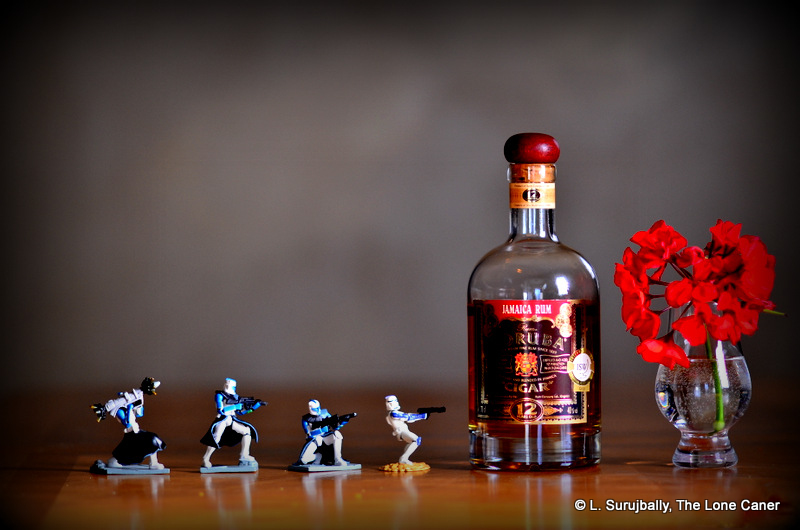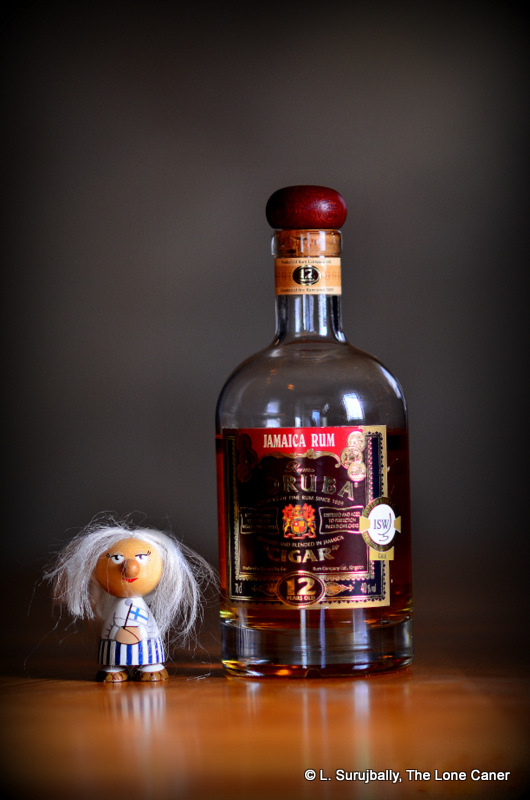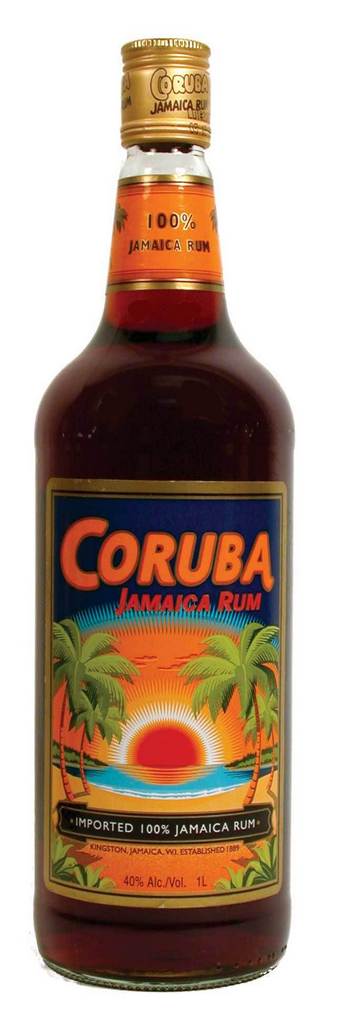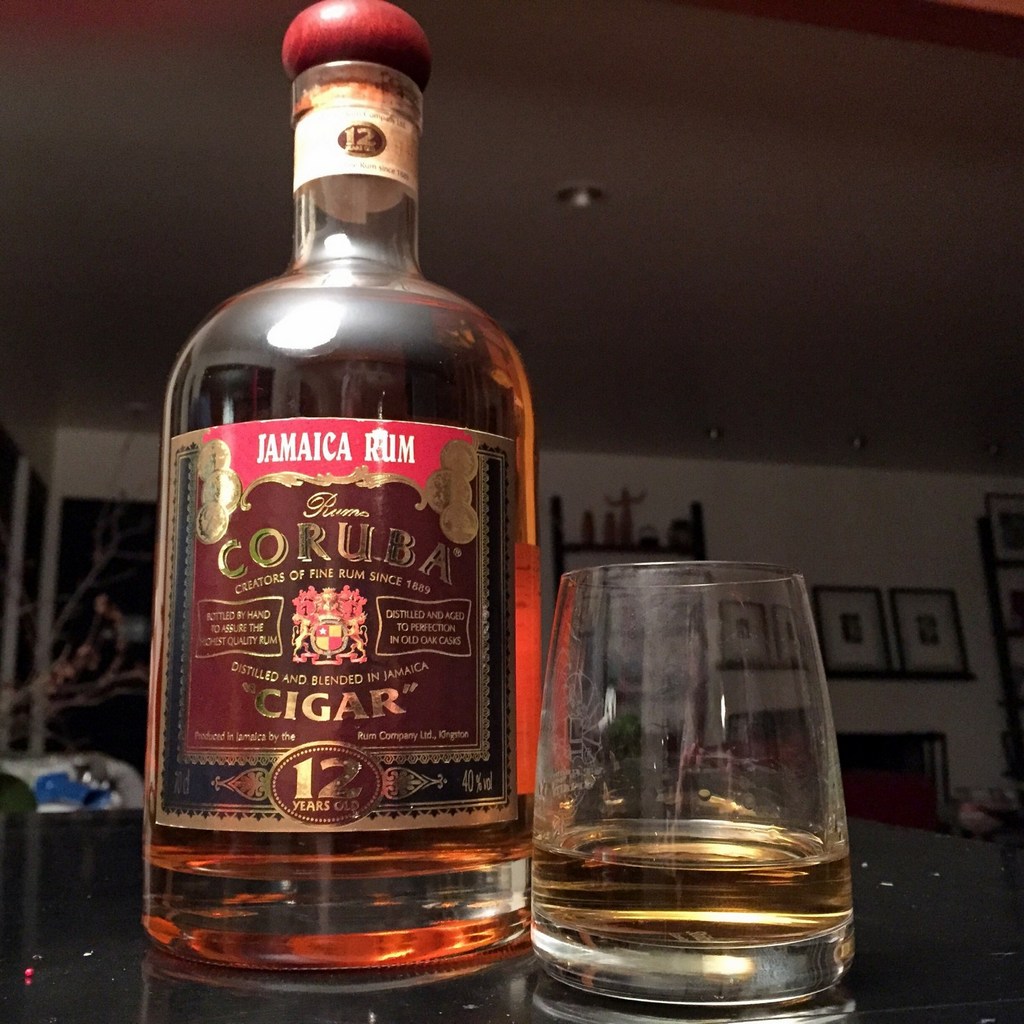
Photo courtesy of and (c) Cocktail Wonk
A proverbial harridan of rums, thin, dry, harsh and critical of everything you do with and to it. I call mine “Jimbo.”
Coruba. That brings back memories. Remember that original shuddering bastard of a mixer I reviewed some years back? It was made in Jamaica but mostly sold in New Zealand, with a trickle going in other directions (like Alberta, or Europe, where a friend picked it up for me for about fifty Euros). It was rough and tough and a powerful inducement to give up spirits altogether. I wrote rather humourously in my original Coruba review, that one should trot it out – generously – for favoured enemies when they come visiting, which I thought may have been a bit harsh. Until I ran into its twelve year old brother, that is.
To paraphrase Josh Miller from the Inu a Kena blog: “I’m mixing a twelve year old Jamaican rum! WTF?”. But it’s true.
The source of this rum is probably a young Appleton (reasonable, since it’s made by the Appleton boys at J. Wray for the Swiss based concern “the Rum Company” which may be as far away from Fassbind’s Secret Treasures line as you can get). In 1967 the Coruba rum was first imported to Europe: its name comes from the name Companies Rum Basel (or Compagnie Rhumière de Bâle) – which is the name of the company in Jamaica which was among the most famous of the islands’ 128 distilleries at the time when the original company was established in 1889. In 1929, the Rum Company Kingston was founded under the management of Rudolf Waeckerlin-Fiechter in order to complete production process of the rum in Jamaica. Since 1962, the marque has been produced by J. Wray & Nephew, and the blending and the bottling for the whole of Europe still takes place in the Rum Company in Basel, which has become a part of the Haecky Group in the meantime.
It was aged in small (no further description available) casks that once held (of course) bourbon and beyond that my research hit a dead end, and I was able to glean no more info on its constituents. But my feeling based on taste and profile suggested a column still product, not one from a pot still.
All this is window dressing through. Bluntly, this is one of the few aged rums I really don’t care for neat. Most are made with care and attention, and a view to rising up the scale to even older versions to come (take the St Nicholas Abbey 12, Cockspur 12, El Dorado 12, and the Appleton 12 as examples). And Coruba does have an 18 and 25 year old knocking about which I’d like to get and see if they up the ante a shade. But that pussyfoots around the central issue of this rum, and that is that it doesn’t work for me.
Take away the labelling on this bottle and what you’re actually left with is the English Harbour 10 year old bottle plus a wooden-cork combo stopper. Not anything to complain about, and actually, quite nice, even if the label was a bit busy to the eye (I’m a fan of beauty in simplicity). It spoke to its manufacture by the Rum Company out of Kingston, the ISW gold medal it won in 2008 and its ageing in “old oak casks” as well as its “handcrafted” nature, which just had me moving on with the same impatience I always feel in the grocery shop when I see idyllic rural farms and hard-working midwestern families pictured on a box of some industrial-level-manufactured product.
The Coruba 12 year old was one of the lightest-hued aged rums I’ve had in a while, being somewhere between amber and honey-coloured (but not blonde). Both the Cockspur 12 and the El Dorado 12 with which I tried it, were darker. The aroma on opening was quite biting, and more than a little astringent – for a 40% aged rum I found this disappointing to say the least, because the other two competitors had noses that were so much richer and deeper – the best I could say about the Coruba was that I liked the subtle scents of flowers, fresh-cut grasses and faint lemon zest, even if it lacked some more complex fruity notes I would have liked. And let me tell you, like the serpent in the garden of Eden, there was an unwelcome note of excess nail polish coiling behind it all that was utterly discombobulating. Again…wtf?
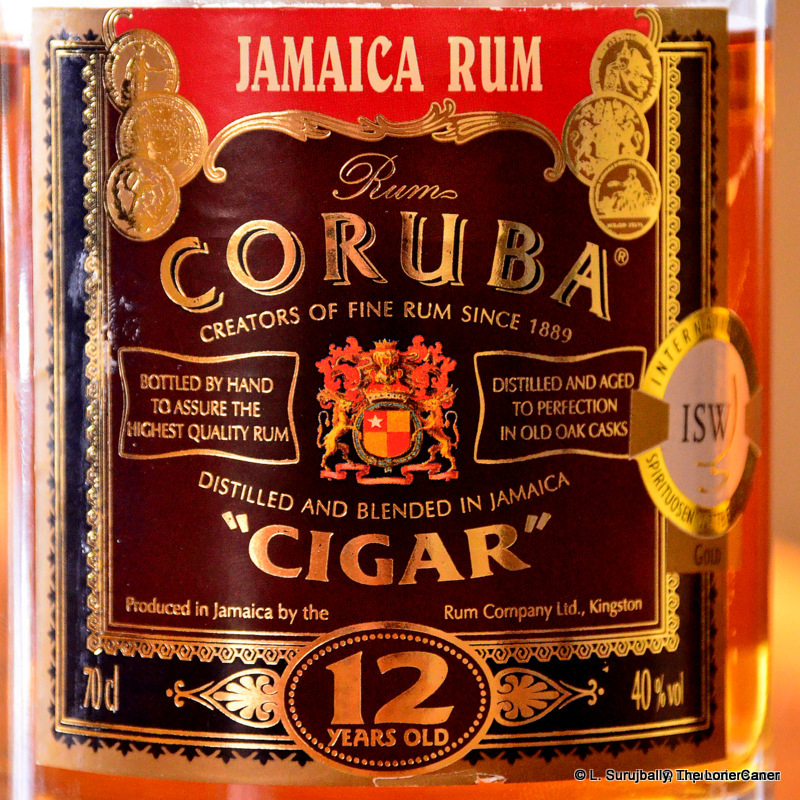 Palate…meh. Thin bodied and both spicy and briny at the same time, a shade harsh on the tongue, like some Dickensian headmaster of old, rod held upright to whip my misbehaving, misbegotten behind. I am not kidding when I tell you that I tasted dry, musty, tobacco and leather first off (almost morphing into cardboard that’s been in the basement too long), with vague caramel, unsweetened dark chocolate, vanilla and burnt sugar notes following on as the rum opened up, followed by a flirt of ripe cherries. But all subtler, sweeter flavours were rapidly overrun by that salty, dry, tobacco background, which, now that I think about it, is probably why they named this one “Cigar”…not because the rum is good to have with one, but because it tastes like one. A dry one at that. As for the finish, sorry, no happy ending there…short, acerbic, unremarkable, and it sure didn’t like me much. Too dry, too peppery, and gave back not enough.
Palate…meh. Thin bodied and both spicy and briny at the same time, a shade harsh on the tongue, like some Dickensian headmaster of old, rod held upright to whip my misbehaving, misbegotten behind. I am not kidding when I tell you that I tasted dry, musty, tobacco and leather first off (almost morphing into cardboard that’s been in the basement too long), with vague caramel, unsweetened dark chocolate, vanilla and burnt sugar notes following on as the rum opened up, followed by a flirt of ripe cherries. But all subtler, sweeter flavours were rapidly overrun by that salty, dry, tobacco background, which, now that I think about it, is probably why they named this one “Cigar”…not because the rum is good to have with one, but because it tastes like one. A dry one at that. As for the finish, sorry, no happy ending there…short, acerbic, unremarkable, and it sure didn’t like me much. Too dry, too peppery, and gave back not enough.
Perhaps it’s a good thing that I merely sample rums to review, and am not a really regular or serial drinker. Because a rum like this, for the price it cost and the profile it presented, would make a normal person swear off rum for good and maybe switch to whiskies (and indeed, I think there are a lot of elements to this rum that an anorak might appreciate more than I would or did). Others with a samaritan-like bent might just use it to address battlefield trauma. Me, I’m just disappointed. Perhaps it’s a depressing rum for me because I had had higher hopes for it.
Long story short, this is a rum that if it were a film noir, I suspect it would have been that film at the point where it’s raining. Hard. Without the neon lights. Just as someone gets offed by his lady love, for whom he cared more than she deserved.
(#146. 75/100)
Other notes
